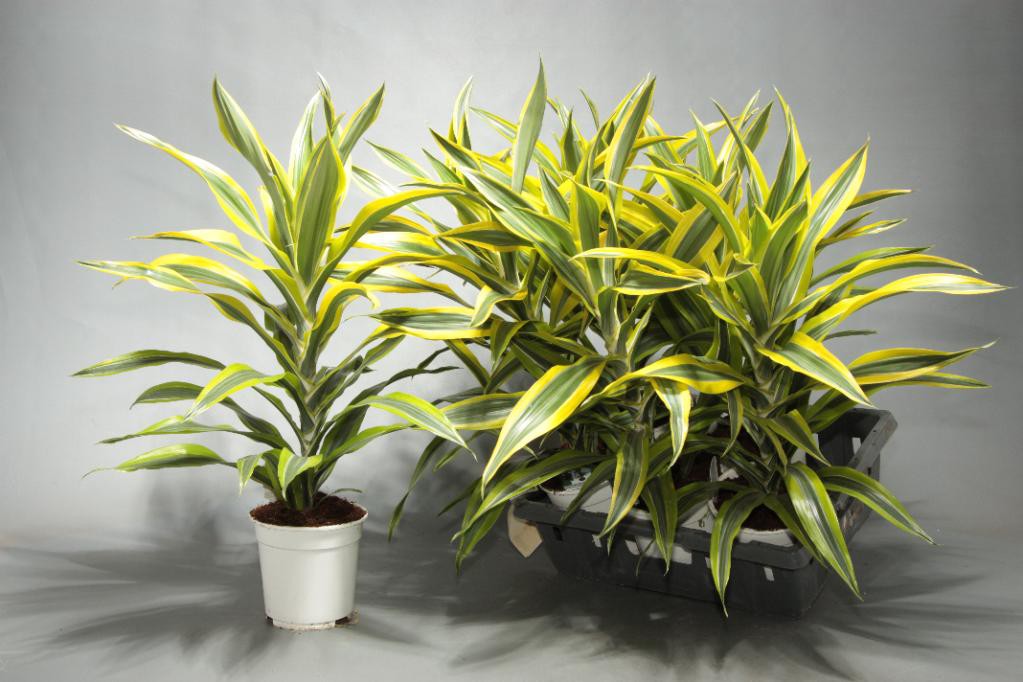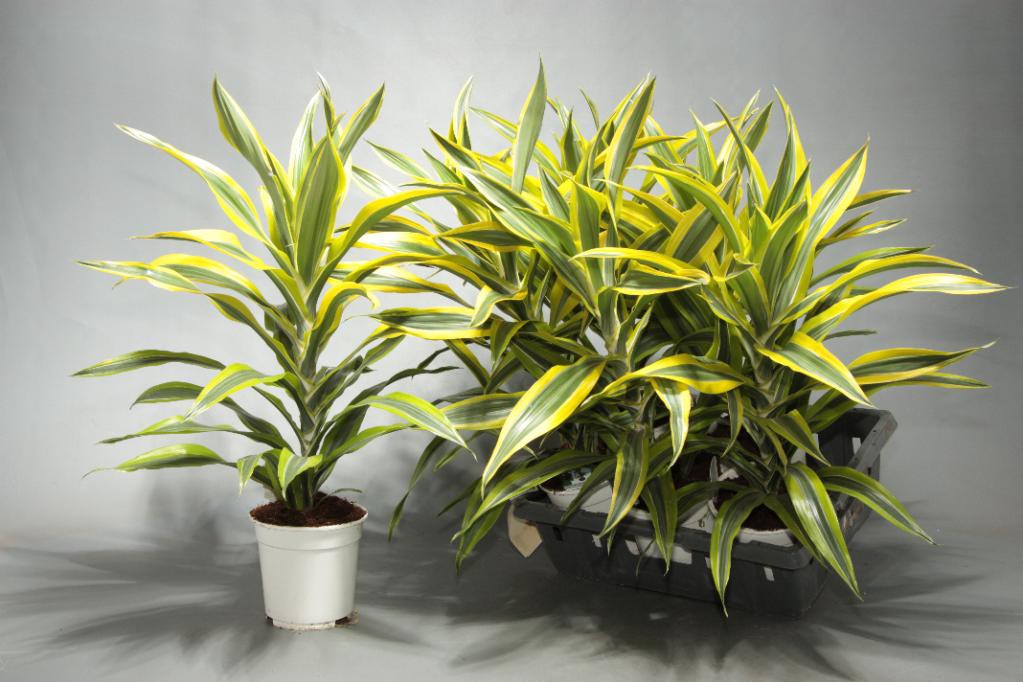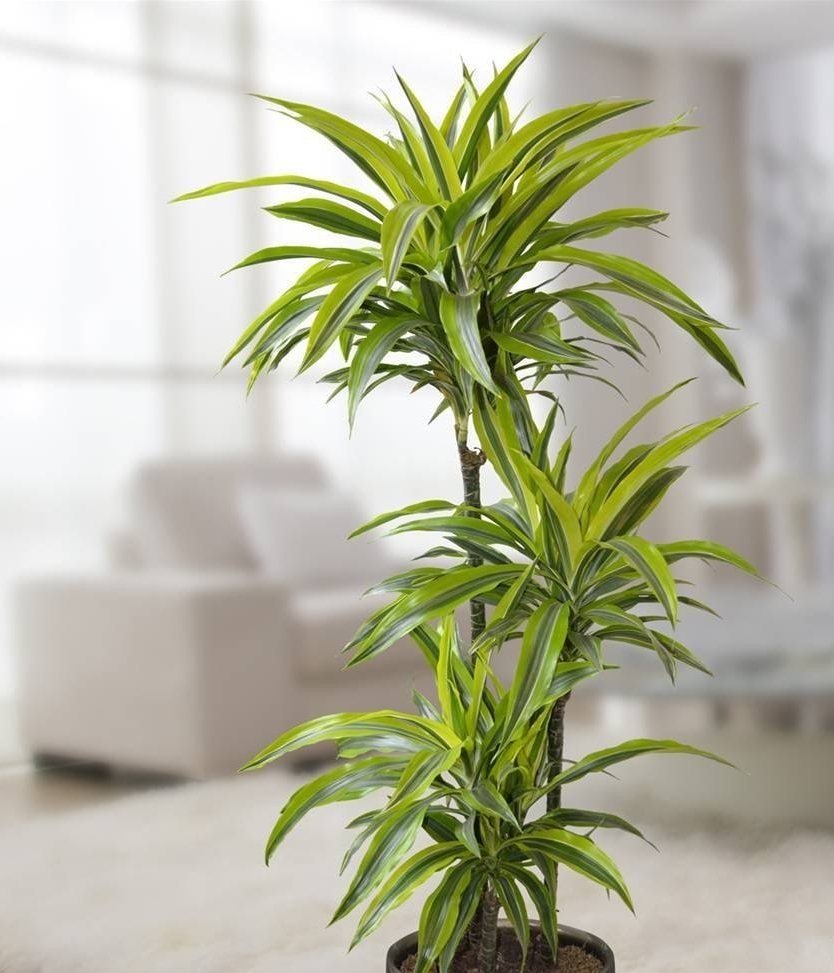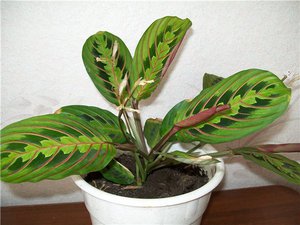 Almost all houseplants in our country came from distant countries. And each of them requires an individual approach. One needs the sun, while the other can die from its influence and prefers shade. Some people need abundant moisture, but there are those that need to be forgotten. And in order for the plant to please the grower with its appearance, you need to know the rules required for care. Consider a catalog of popular indoor flowers.
Almost all houseplants in our country came from distant countries. And each of them requires an individual approach. One needs the sun, while the other can die from its influence and prefers shade. Some people need abundant moisture, but there are those that need to be forgotten. And in order for the plant to please the grower with its appearance, you need to know the rules required for care. Consider a catalog of popular indoor flowers.
Content
Indoor plant classification
All pets plants can be divided into 4 groups, each of which has its own characteristics and characteristics. Groups:
- decorative leaf. This group, if you follow all the rules for care, will be with flower growers for a long time. Their leaves are mostly green all year round. The only thing is that there are species that should be removed to cool rooms in winter.
- decorative blooming. Flowers of this group are referred to as centenarians. Their leaves do not die off after flowering, just, in some of their species, they become not so attractive. Among the indoor plants of this species, some need to be provided with coolness in winter, and some should be taken out into the garden for the summer.
- decorative and flowering pot plants. These types are mainly used for a variety of floral arrangements. After they have lost their appearance, they are simply disposed of. But, if tubers of some species are left, then it is possible to use them next year. That is, plants of this group can be decorative and flowering for a short time.
- cacti. This is the most famous and popular species. Their stems are covered with spines and hairs. Sometimes found in cacti and ordinary leaves for us. Many of the cacti can bloom. They are long-livers and quite unpretentious.
Catalog of indoor flowers
Consider the names related to decorative deciduous, which are valued for beautiful leaves, as well as decorative blooming, capable of boasting beautiful flowering.
Dracaena
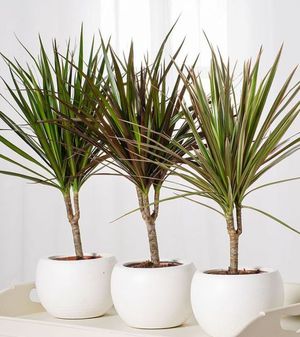 It is a shrub that attracts with its exotic appearance. It has a rosette of leaves with straight stems, turning over time into a trunk. Depending on the species and age, it can reach three meters... The leaves of this home plant are juicy green and elongated. Dracaena with proper care in room conditions can last up to 15 years. Dracaena types:
It is a shrub that attracts with its exotic appearance. It has a rosette of leaves with straight stems, turning over time into a trunk. Depending on the species and age, it can reach three meters... The leaves of this home plant are juicy green and elongated. Dracaena with proper care in room conditions can last up to 15 years. Dracaena types:
- dracaena tree
- dracaena cinnabar
- Dracaena deremenskaya
- dragon tree
- fragrant dracaena
- Dracaena Godzef
Dracaena is an unpretentious shrub that will not cause huge trouble to the grower, if you follow the following care rules:
- Dracaena is a light-loving plant, but it is necessary to protect it from direct sunlight.
- moisture-loving, abundant watering is necessary. It should be carried out as soon as the top layer of the soil has dried approximately 2 cm.
- before watering, it is advisable to loosen the soil.
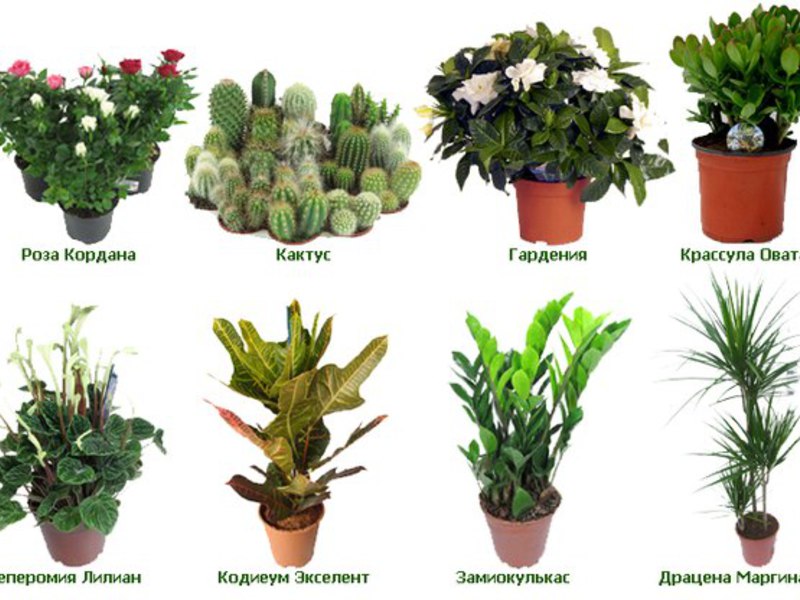
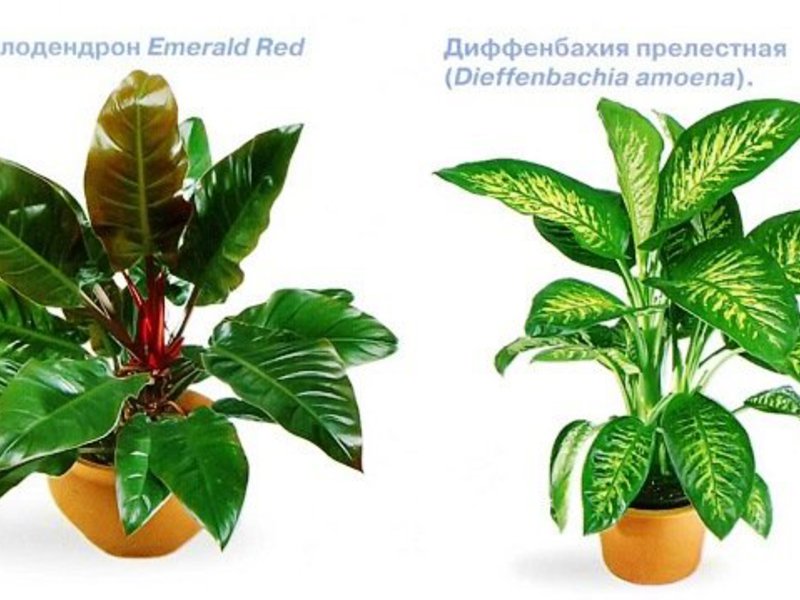
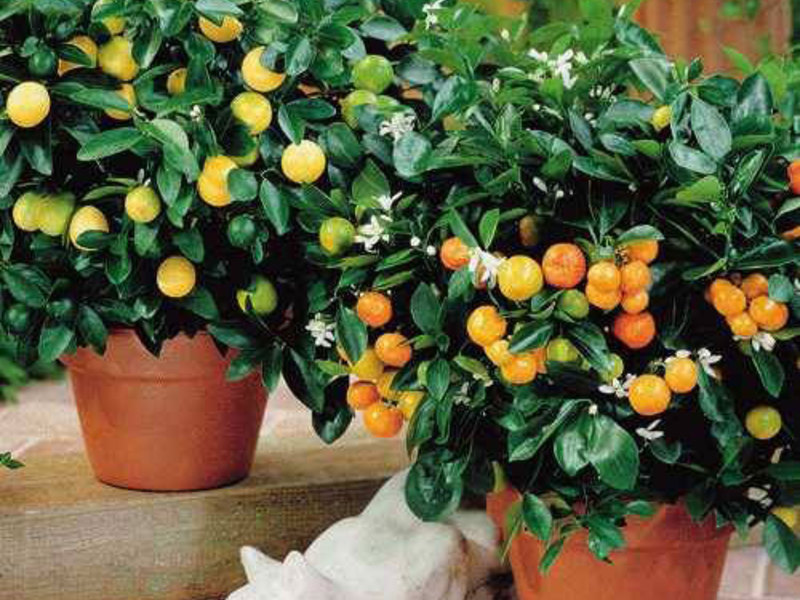
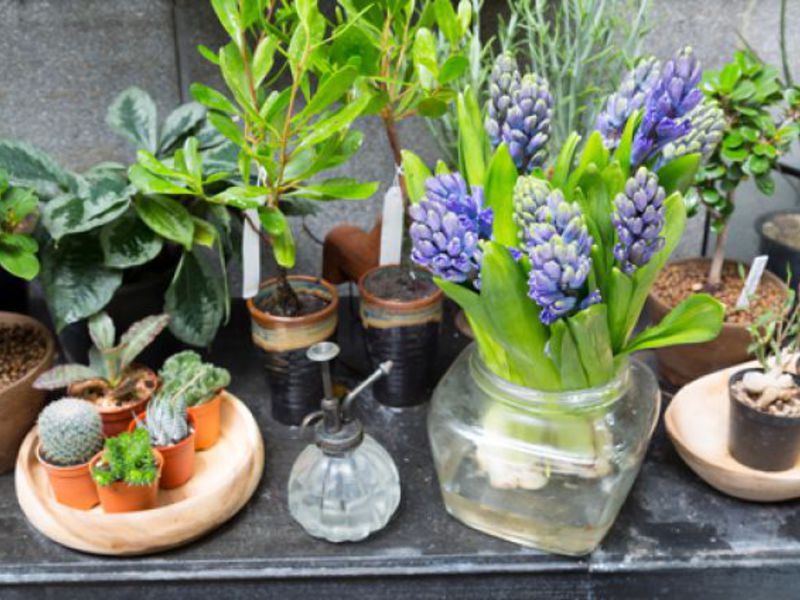
Cypress
Refers to coniferous crops. Not picky about care, it will take root in a new place easily. He is very light-loving and is not afraid of the sun's rays. In insufficient light, cypress can die... It does not tolerate drafts and strong winds, but the room where it grows needs to be ventilated regularly.
The plant loves moisture, so it must be sprayed, and containers with water can also be placed next to the pot. Cypress need to water regularly, observing this every day to prevent the soil from drying out. In winter, you can water less often in order to prevent root rot.
Cypress in May - September needs fertilizing. It can be purchased from specialized stores.
Decorative flowering indoor plants are loved because of the exquisite flowers. They are also among themselves differ in appearance, in care requirements, in smell... Examples of decorative flowering: saintpaulias, acacia, anthurium and others.
Saintpaulias or Usambara violets
These indoor flowers are almost perfect, because they bloom almost all year round, mostly without taking up much space on the windowsill. Many colors of flowers, there are both gentle shades and bright flashy. In order for violets to bring joy with their flowering, they need to create the necessary conditions. Saintpaulia care rules:
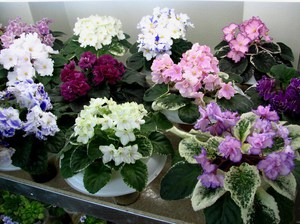 observe the temperature at which the Saintpaulias grow - this is 21-22 0С.
observe the temperature at which the Saintpaulias grow - this is 21-22 0С.- Saintpaulias do not tolerate drafts.
- grow well on windowsills from the west and east.
- watering is carried out with settled water and into a sump, or so that water does not fall on the leaves.
- watering as the soil dries out.
The lower leaves and faded flowers are cut off. If in the spring saintpaulia gave a second outlet, then it must be cut off and put into water.
Anthurium
It has a shortened stem that can be aboveground or underground. Its leaves are green in color, reaching a length of 15 cm, and 7 cm wide, flowers come in a variety of colors. Anthurium care rules:
- protect from drafts.
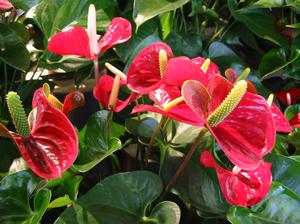 keep an indoor flower at a temperature of 18–20 0С. In winter, it is imperative to isolate it from heating devices.
keep an indoor flower at a temperature of 18–20 0С. In winter, it is imperative to isolate it from heating devices.- the window, as a rule, suits him an oriental one with bright diffused light.
- with a lack of light, the plant must be illuminated with fluorescent lamps. If this is not done, then the leaves become shallow and the color of the flowers fades.
- regular watering as the upper soil slightly dries out, but it should be borne in mind that the soil does not dry out.
- the plant loves moisture, so it is advisable to spray it with water 2 times a day and ventilate the room where the anthurium stands.
Spathiphyllum
It is a stemless houseplant with a short root. Views:
- cannoli spathiphyllum - differs from its other species in its wonderful flower aroma. Its leaves are juicy green. Blooms in spring and winter.
- spathiphyllum profusely blooming - can bloom throughout the year.
- Willis spathiphyllum - perfect for growing indoors.
- Spathiphyllum is heliconielous - rather large, reaches a height of up to 1 m.
Spathiphyllum care rules:
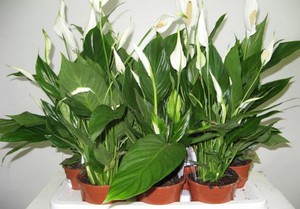 ambient light is suitable for indoor culture, because the direct rays of the sun cause burns on its leaves.
ambient light is suitable for indoor culture, because the direct rays of the sun cause burns on its leaves.- heat-loving plant. In summer, a temperature is needed - from 18 to 25 0С. In winter - not less than 14 ° C.
- does not tolerate drafts and cold air.
- watering should be carried out as the top layer of the soil dries up, in the spring-summer period, water abundantly, and in autumn and winter, cut only once a week.
Indoor plants, the photos and names of which you see below, belong to the decorative-flowering pot type. Difference from the previous type in the fact that such indoor flowers can only spend a short period of time in residential premises. If the plant begins to fade, then the days of this flower are already numbered.
Only some of their species can be saved. Therefore bmost plants are thrown away, some retainby moving them cool, while others can be stored as bulbs until next planting.
The short life of such cultures is the main drawback. These include flowers such as azalea, chrysanthemum, poinsettia, gloxinia.
Azalea
It is considered an evergreen, branchy, flowering dwarf plant. Types of indoor azaleas:
- Indian azalea. The height of this evergreen shrub is up to 50 cm, its leaves are small, no more than 3.5 cm.
- Japanese azalea reaches a height of 50 cm, it has white shiny leaves, which are smaller than those of the previous species.
Basic rules for caring for room azalea:
 the window sill on the east side is perfect for her. The main thing to remember is that the light should be diffused.
the window sill on the east side is perfect for her. The main thing to remember is that the light should be diffused.- It is not thermophilic, therefore 15-18 degrees is enough, and during budding the temperature should be 5-6 0С lower.
- it needs sufficient moisture, for this it is necessary to spray the plant quite often with slightly cool water from a spray bottle. When the azalea blooms, you need to spray it carefully, since the delicate flowers can darken from the water, containers of water placed around will help you out of the situation.
- watering should be regular, abundant during flowering.
- do not overflow to avoid rhizome rot.
Cacti are a separate type of indoor crops that delight the grower with their unpretentiousness.
Mammillaria
A fairly large cactus with a dark green stem in the shape of a ball or cylinder. The main the difference from all other cacti is the presence of papillae from which needles appear... The roots are, as a rule, on the surface, only the root system in the center goes deeper. Types of Mammillaria cactus:
- Mamilaria shide is a miniature form, shaped like a ball with a diameter of 4 cm.
- Large-nosed mammillaria - this species is distinguished by its large size, up to 30 cm high.
- Mammillaria snow-white is also a rather large species.
- Mammillaria Teresa - this type of cactus has very large flowers, reaching 3 cm in diameter and, as a rule, they are purple in color.
- Mammillaria prickly is a medium-sized cactus, often not branched in the form of a cylinder.
Basic rules of care:
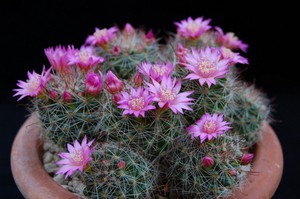 the plant is light-requiring, so it needs sufficient lighting.
the plant is light-requiring, so it needs sufficient lighting.- in no case should overflow be allowed, it may die from an excess of moisture.
- in order for the cactus to please with its flowering in spring, in winter it is necessary for the indoor flower to ensure proper wintering.
- it is important that the soil of the mammillaria is always loose.
- make top dressing.
- monitor the appearance of the cactus, its roots in order to avoid the presence of diseases and pests.
Lobivia
It's classic cactus with a stem in the form of a ball, cylinder... Her flowers are yellow, pink, white, red. Types of lobivia:
- lobivia bakeberg is a dwarf with a gray coloration of the stem. In diameter, it does not exceed 5 cm, the color of the flowers is cream.
- lobivia bolivia - a cylinder-shaped stem with a gray-green color. The height of this type of cactus reaches 10 cm.
- lobivia densispina - this cactus consists of a number of species of various stem shapes, flower color, and thorns. The main feature is their large size and bright coloration.
- lobivia zhazhoyana - this type of cactus is distinguished by its spherical stem, not exceeding 10 cm in diameter.
Basic rules for caring for indoor culture:
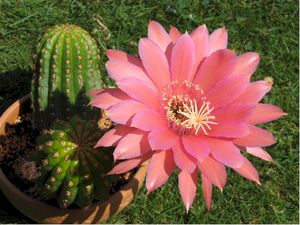 photophilous, so the ideal place for her is a windowsill on the south side. If there is not enough light for it, then the stem is deformed and the needles fall off.
photophilous, so the ideal place for her is a windowsill on the south side. If there is not enough light for it, then the stem is deformed and the needles fall off.- in winter, the culture has a dormant period, it must be provided with coolness so that flower buds are laid.
- watering should be carried out only after the soil in the pot has completely dried, it should be watered in the spring after the appearance of flower buds, then by mid-July watering should be stopped, and in August it should be renewed again until November.
- lobivia is undemanding to moisture and should not be sprayed.
Having considered the types and names of the crops presented, the florist will independently be able to choose the most suitable one for himself. Because depending on their type, indoor flowers differ for home care requirements.
